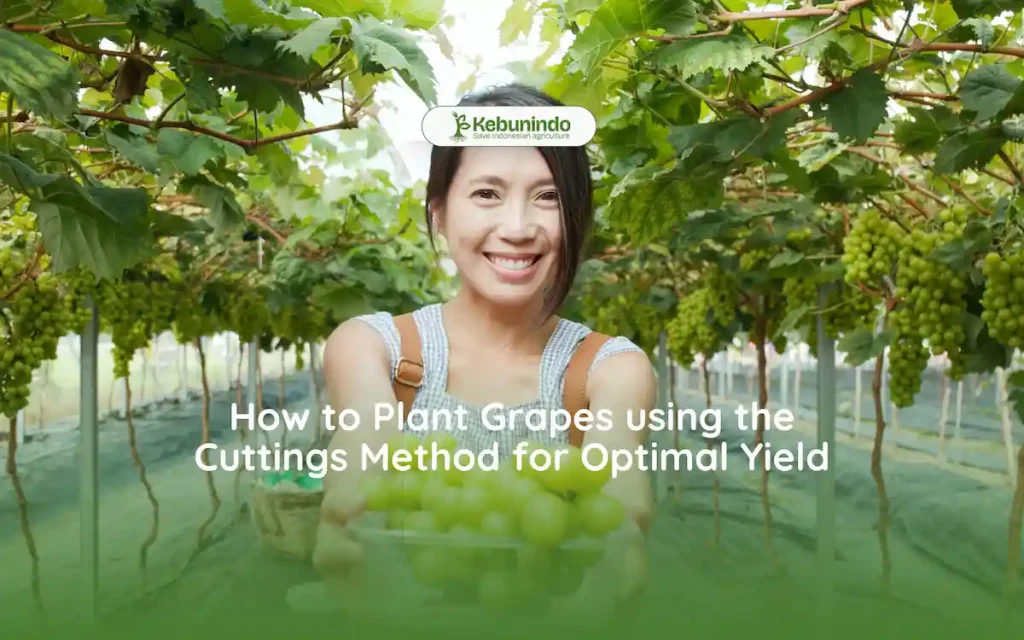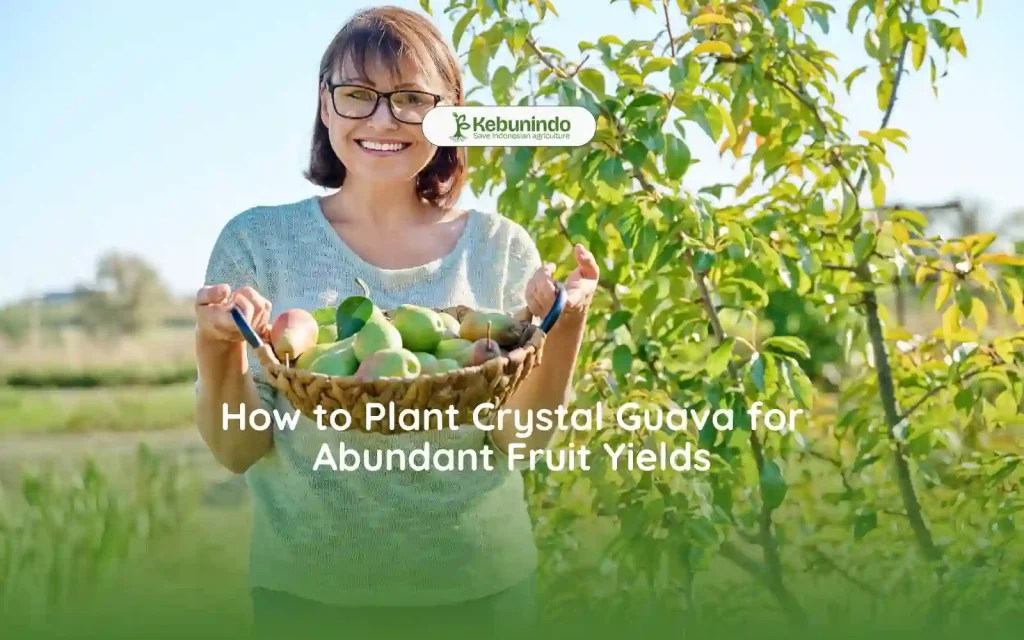Grapes (Vitis vinifera L.) are perennial plants that grow as shrubs and climbers. Grapes can grow at an altitude of 0-1000 meters above sea level, but they grow optimally at an altitude of 0-300 meters above sea level.
The ideal environment for grape cultivation includes an air temperature of 23-31℃, air humidity of 75-80%, annual rainfall of 500-600 mm, and soil pH of 5.5-6.5. Grapes are typically ready for harvest around 90-135 days after pruning.
The productivity of grapes can reach up to 10 tons per hectare or 1 kg per square meter. Grapes can be cultivated either generative or vegetative.
1. Selection of Seedlings
The propagation of grapes through vegetative means, such as stem cuttings, is more popular because it produces high-quality seedlings, accelerates production, and ensures fruit similar to the parent plant. Cuttings should be taken from a healthy parent plant that is at least 2 years old, has previously borne good-quality fruit, and is disease-free.
Choose tertiary branches with 2-3 nodes, a length of 25-30 cm, and a minimum diameter of 1 cm for cuttings. In Indonesia, the Isabella grape variety is known for its adaptability to various conditions.
2. Seedling Preparation

Seedling preparation is carried out by filling polybags with a growing medium consisting of sand, manure, and soil in a 1:1:1 ratio. The growing medium is then watered, and the cuttings are inserted vertically into the polybag to a depth of 1-2 buds.
The polybags are placed under shade to protect them from direct sunlight and are gradually moved to a location exposed to sunlight.
3. Land Preparation
Proper land preparation is crucial in grape cultivation to ensure optimal growth and harvest. Here are the steps for land preparation that need to be carried out:
- Clean the land: Remove weeds and plant residues to reduce competition for nutrients and water, as well as to prevent the spread of pests and diseases.
- Loosen the soil: Perform soil loosening to improve aeration and drainage, which are essential for grape root growth.
- Prepare planting holes: Create planting holes with a spacing of 2.75 m x 5.5 m and dimensions of 50 cm x 50 cm x 50 cm. Leave the holes open for 7-14 days.
- Prepare the growing medium: Mix soil, sand, and manure in a 1:1:1 ratio. Place this mixture into the planting holes and water adequately to maintain moisture.
- Adjust soil pH: If the soil pH is below 5.5, add dolomite lime at a rate of 1.5 tons/ha or 150 gram/m², 2-4 weeks before planting.
4. Planting
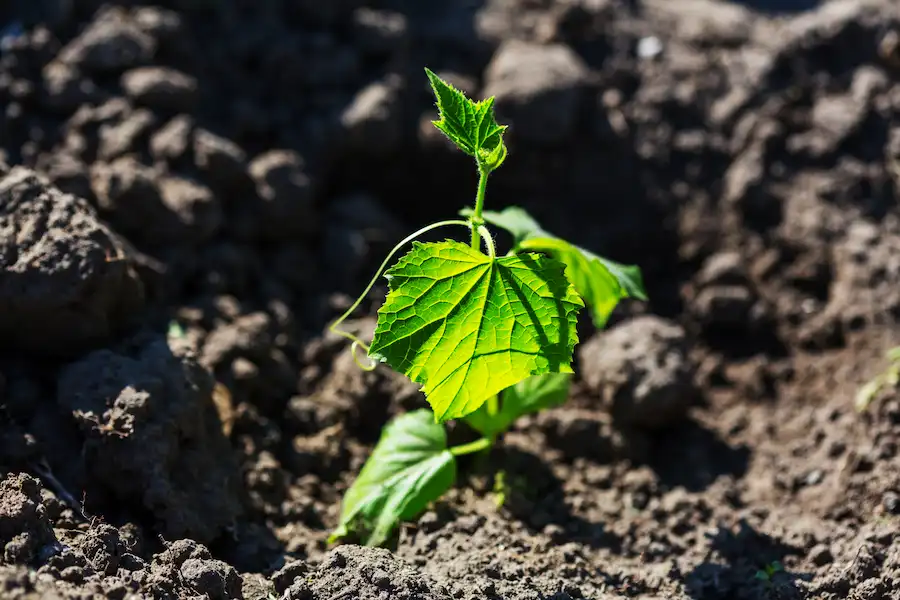
After 2-3 months, the grape seedlings are ready to be transferred to the field. Before transplanting, water the seedlings in the polybags to ease the removal process.
Carefully remove the seedlings to avoid damaging the roots, then plant them in the prepared holes. Ensure the seedlings are upright and compact the soil around the base of the plant.
Water them adequately and make sure the planting location receives sufficient sunlight to support the optimal growth of the grape seedlings.
5. Creating Stakes and Trellises
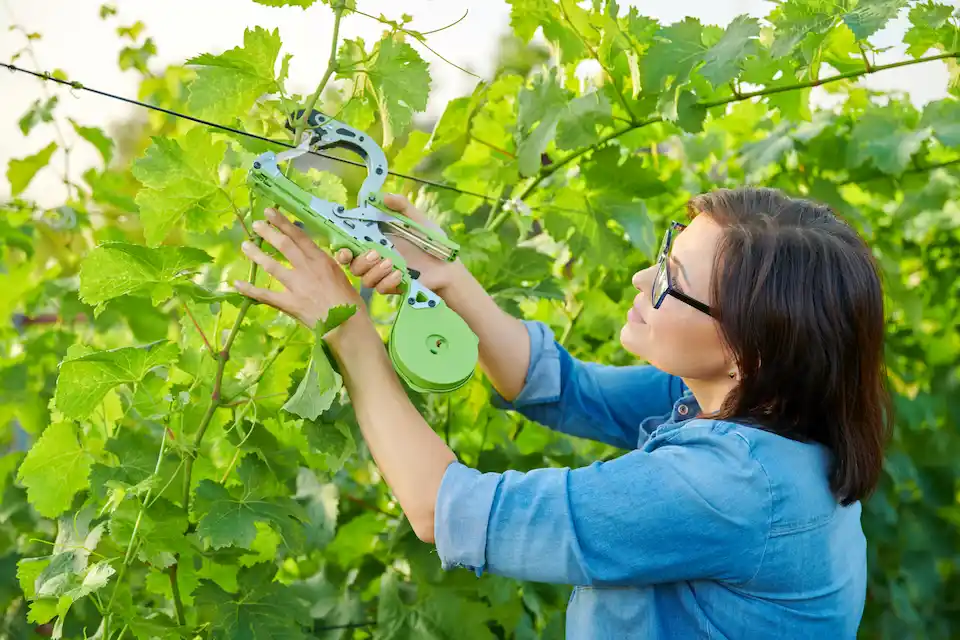
As the plants grow, tie the stems to supports made of wood or poles every 10 cm of growth. Use raffia strings or tape that will not damage the stems.
Grape plants are climbers, so to manage their growth and fruiting, they require a trellis system. One common design used for grape trellises is the pergola.
A pergola is a structure with crossbars on top for climbing plants like grapes, acting as a shade, and supported by rows of posts. When constructing a pergola trellis, it is important to use materials such as wood, metal, or concrete.
The spacing between the posts should be 3×3 meters or 4×5 meters, with a 40×40 cm spacing for the vines, and the height of the posts should range from 2 to 3.5 meters.
6. Watering
For grape plants aged 0-8 months during the dry season, irrigation can be done every 3 days. The frequency of irrigation should then be reduced during the rainy season.
For plants that are already in production, irrigation should be done again three days before pruning and continued until the fruit is nearing ripeness. Watering should stop 2 weeks before the fruit is harvested. Then, 4 days before harvest, irrigation should be resumed until the harvest is completed.
7. Fertilization
During the vegetative phase, grape plants are fertilized with NPK 16-100 at a rate of 100 grams once the plant reaches a minimum height of 2 meters. The fertilizer is spread around the plant in a 50 cm radius, then watered to dissolve into the soil.
This fertilization is repeated every month until the plant is ready to bear fruit. When the plant enters the generative phase, apply compost around the plant, then after 3 days, apply MKP and KNO3 fertilizers at a rate of 1-2 tablespoons dissolved in 5-10 buckets of water.
This fertilization should be done weekly for 4 applications. During the fruiting phase, when the fruit is the size of a corn kernel, continue fertilizing with MKP and KNO3 until just before harvest for optimal results.
8. Pruning
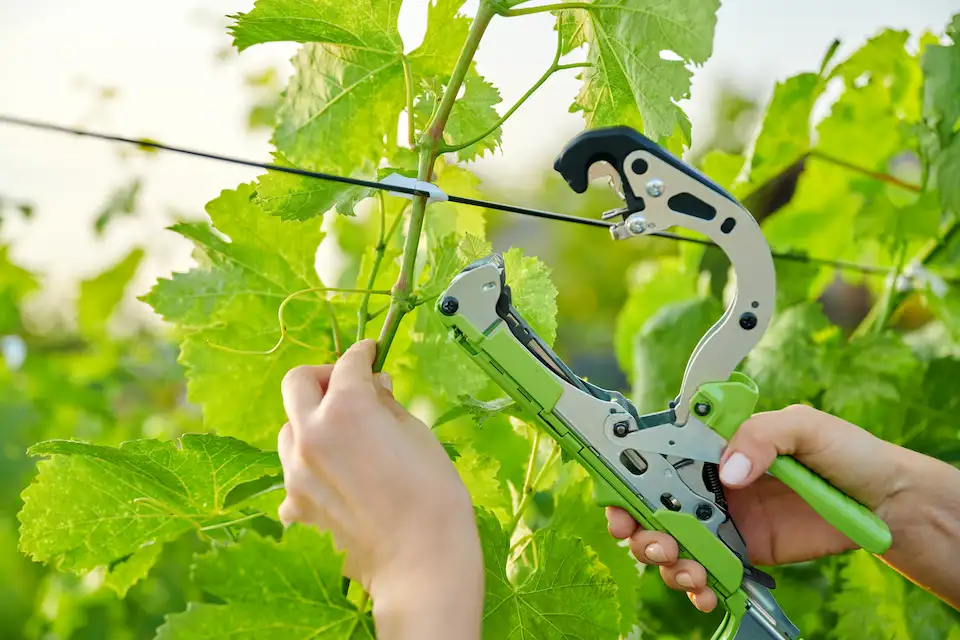
During the vegetative phase, light pruning is necessary to regulate the number of leaves and improve air circulation, ensuring optimal grape plant growth. In the generative phase, intensive pruning is required to optimize flowering and fruiting.
The first step in pruning is selecting healthy primary branches with the largest diameter to serve as the main branches. Next, prune any primary branches that exceed the trellis or support.
When secondary branches begin to grow, maintain them by leaving 3-5 buds to produce tertiary branches. Proper pruning helps grape plants grow healthy and productive.
9. Thinning
Thinning is the process of selectively removing fruit to provide space for the remaining fruit to grow. In grape thinning, it is necessary to remove the tips of the grape clusters, any diseased or uneven fruit, fruit that is cramped, or cracked fruit.
Grape thinning is carried out in two stages: the first stage when the grapes are the size of soybeans (29-42 days after pruning), and the second stage when the grapes are the size of corn kernels (33-44 days after pruning).
10. Pest and Disease Control in Grapes
Grape plants are susceptible to various pests and diseases that can affect their growth and harvest. For pest control, it is important to conduct regular monitoring and maintain the cleanliness of the vineyard. Common pests that attack grapes include thrips (Thrips sp.), red mites (Tetranychus sp.), and stem borers (Melittia cucurbitae). Control can be achieved by spraying plant-based pesticides made from neem leaves or galangal extract. If necessary, use appropriate insecticides such as methomyl or abamectin, following the recommended dosage. On the other hand, diseases such as downy mildew, powdery mildew, and fruit rot should also be monitored. Disease control can be done through the destruction of infected plants, land sanitation, and the use of proper fungicides if needed.
11. Harvesting
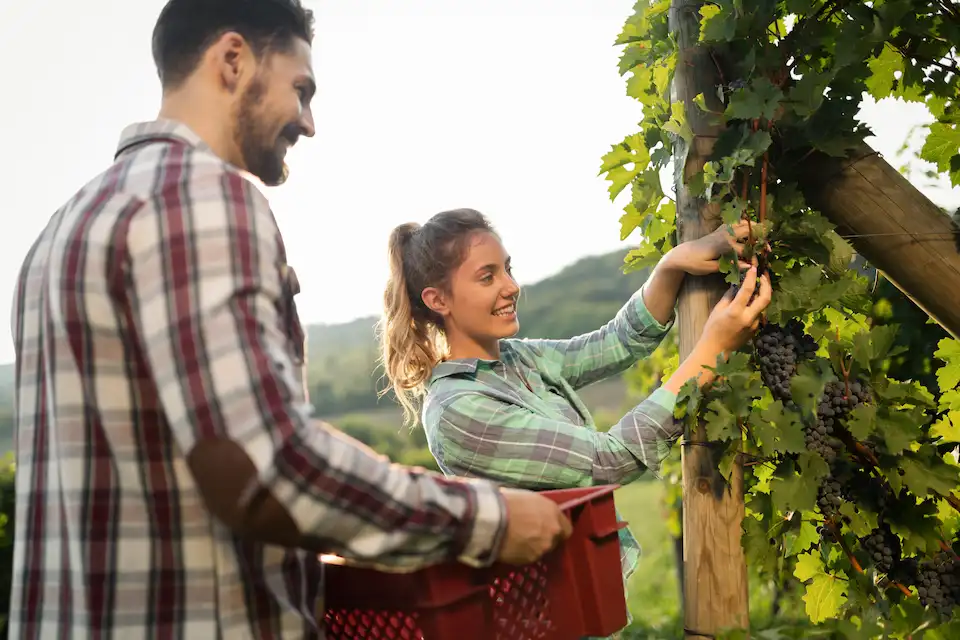
The harvest age of grapes depends on the variety being grown, the climate, and the altitude. Generally, grapes are harvested 95-135 days after pruning. The indication that grape plants are ready for harvest is when the fruit has reached optimal ripeness, which is marked by changes in color, taste, and sweetness according to the variety.
It is best to harvest in the morning to obtain the best fruit quality. The harvesting process is done by cutting the grape clusters using pruning shears, leaving a small part of the stem.
12. Post-Harvest
After the harvesting process, the grapes need to be sorted into marketable and non-marketable fruit. The marketable fruit is then collected in cardboard boxes, wooden crates, or plastic baskets with bottoms lined with newspaper or straw paper to protect the fruit from damage.
The grapes are then classified based on the size of the berries or clusters. The transportation of the harvest should be done carefully to maintain the quality of the fruit and prevent damage. Be sure to handle the fruit gently and maintain cleanliness during packaging to keep the grapes fresh and ready for sale.

